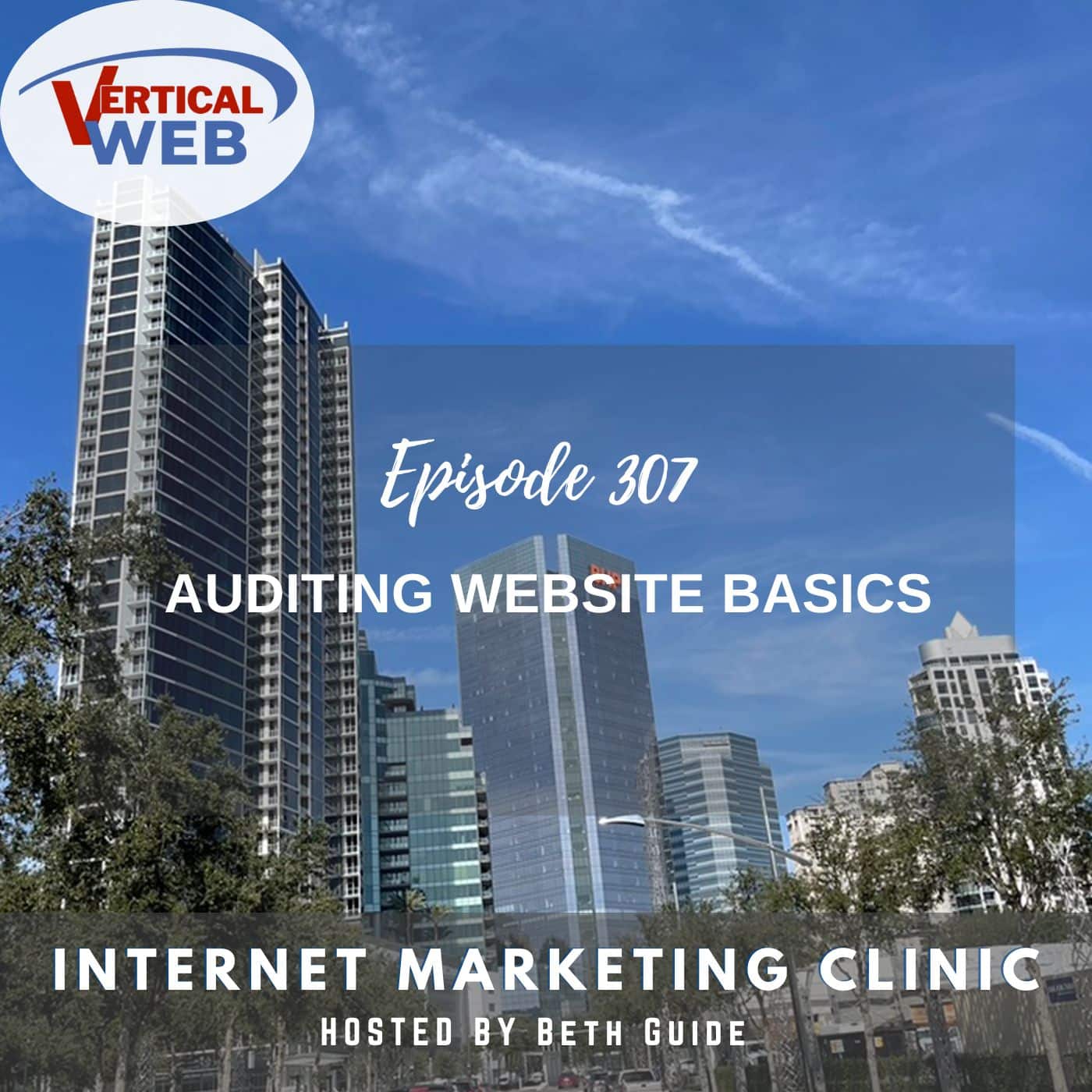Subscribe to Our Podcast Apple Podcasts | RSS
Auditing Website Basics: The Rules Every Business Website Should Follow
Developing a business website is difficult work. To be frank, it’s a job that most small business owners aren’t prepared to handle on their own. The job is only getting tougher, too, as Google is constantly raising the bar on what constitutes a high quality, trustworthy site. And every business owner should want a website that Google considers trustworthy because those are the sites that secure top ranking spots.
If your site isn’t performing as well as it should, the problem (or problems) may be basic. With so many elements to optimize on modern websites, it’s practically impossible for small business owners to catch everything. That’s why we’ve put together this quick guide to business site basics. Follow these rules, and your site will be off to a good start.
First, a word of caution about website builder platforms
Before diving into those rules, though, we need to address a question that comes up all the time:
“Can I build a business site with Wix, Squarespace, Shopify, etc.?”
The answer is yes, you could, but business owners should avoid doing so at all costs. Site builder platforms are easy to use and inexpensive, but the website they crank out are impossible to market and optimize. That’s a deal breaker for any business owner that plans on using their site as a lead and sales generator.
Websites build on one of the above platforms are essentially invisible to Google. They spit out bloated code that Google has trouble recognizing and interpreting. They give site owners insufficient latitude to make major technical changes. They do not allow site owners to choose their own host and you’re trapped inside the platform’s ecosystem. If the platform goes under, so does your website, permanently.
Given all of this, we cannot in good conscious recommend site builders. What we do recommend is WordPress – the standalone version, not WP’s own platform and hosting service. WordPress remains the gold standard for marketability, customizability and performance, so every business owner’s first choice should be WordPress.
That out of the way, on to the rules:
Rule 1 – Make sure your title tag and headers are formatted properly
Every page should be paired with a title tag – it’s the single most important element in helping Google understand what the page’s content is about. This title is identified using a title tag – something you may hear referred to as an H1. H1 (or H2, H3, H4 and so on) tags are designated in the page’s HTML code and are used to identify a title or header. Titles and header are important for Google and users, and generally for the same reason – they help the reader understand what the page’s content is about. This is obviously important for users, as their decision to consume the content or move on has to do with the content’s title.
It’s also crucial for SEO purposes because Google isn’t going to rank a page that it doesn’t understand or isn’t properly titled. Properly-formatted and written headers help Google with this. Proper format means using the right H tag – only one title tag (H1) per page, and headers should be organized in a hierarchical format. That means using an H1 with the top header, H2s for content section headers, H3s for subheads inside those content sections and so on down the line.
Rule 2 – Feature your services and products in high-importance navigation elements
If Google doesn’t know what your business sells, it will probably not rank the page. At best, your site will be improperly categorized in the wrong product or service area. The result of this? Users ending up on your site after searching for something completely unrelated to your business. That’s exactly the kind of traffic business owners don’t want.
To ensure Google places your site in the right category and serves it to the right users, reinforce what your company does in the site’s most important navigation elements. Specifically, this means placing your top-level product and service categories up in the top nav menu. One of the first elements Google checks when crawling a page is the navigation. Put your product and service categories up here – don’t be afraid to get rid of generic nav entries like “about us” – and your site is far more likely to be served to the right users.
Rule 3 – Make sure your content helps Google understand what your business is about
For Google to properly categorize and locate your company – important for local businesses – the search engine will use content clues to determine where to place you. For obvious reasons, it’s important that Google identify what your business does and where it’s located as precisely as possible. If search engines have this information, they’ll be more likely to list your website on local search results pages relevant to your area. In other words, it will be easier for potential customers in your service area to find your business.
Again, content clues are key here. The writing and photos on your website should address what your business does and where it operates, as directly as possible. Google has difficulty discerning between certain terms (a painter, for example, could be a house painter or an artist – Google can confuse them), so don’t be clever or coy with what your business does. No long-winded personal story about what inspired you, the business owner, to start the company. No personal anecdotes or attempts at humor. Just keep it direct and professional.
This approach extends to the use of location-specific keywords.
Rule 4 – Find and fix anything that would make your brand look amateurish or untrustworthy
Depending on its size and function, your website may have hundreds or thousands of pages and URLs – with thousands of links connecting all of it together. That’s a lot of online infrastructure to maintain, and it’s common for the occasional technical issue to emerge – like a broken link, a bad redirect, a missing piece of content, a duplicate page and so on.
Each of these issues has the potential to damage your brand online. It’s like walking into a brick-and-mortar business and finding out the restroom is out of order. While it may not have a direct impact on the business’s operation, it’s a bad look all the same.
The same is true online. If users click on a product page but are instead taken to a generic 404 page, there’s a good chance they’ll leave the site altogether – removing your chances of converting them into a customer and dinging your user experience metrics in the process.
The goal, then, is to identify and resolve the myriad, minor technical glitches that can impact how users respond to your site. You may need to bring in a web development or digital marketing expert to address this, as it may involve running various technical audits (targeting indexing errors, duplicate pages and the like), diagnosing the offending issues and correcting them.
Nailing down the basics is the first step to website success
Every business website is a custom-built, complex piece of software that serves multiple purposes. It’s a lead generator, a 24/7 salesperson, a brand ambassador and a showcase for your company’s knowledge and expertise.
That’s several important roles your website must fill for it to be an effective investment. And with online competition as fierce as ever, there’s no room for basic mistakes.
Hopefully, this guide revealed some of the most common, fundamental problems that small business owners run into with their sites. If any of the above apply to your site, an experienced web development and digital marketing firm can help correct them and get your site back on the right track.
- Google Leaks and What They Mean for SEO and Small Business from an SEO Expert - July 19, 2024
- SEO Hacks: Easy Ways to Win at SEO - June 8, 2024
- Last Call for Todays Class Get Your Business On the Map – - May 22, 2024


